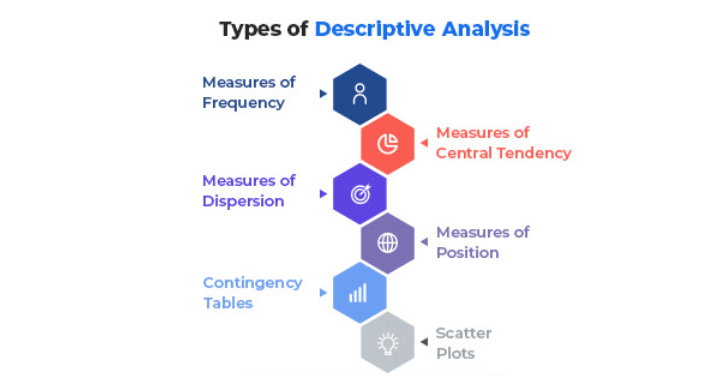
We will journey through quantitative analysis methods in engineering and business research by delving into the realm of descriptive statistical analysis, a fundamental technique for uncovering meaningful insights from historical data.
Data-driven community, currently at the top of the world’s attention through words such as Big Data and Data Science, underlines the importance of credible analysis techniques. With these skills, descriptive analysis is the cornerstone of data analytics, transferring raw data into meaningful conclusions. Therefore, analysis is the fundamental stage where data is organized, arranged, and modified to find patterns and present the information clearly.
Understanding Descriptive Statistical Analysis
Descriptive analysis is a way of analyzing data in an articulate and organized manner, involving the summarization and presentation of data in an easily understandable way. The basic task in statistical data analysis is being able to determine data distribution, revealing irregularities, and finding a connection between variables. By using descriptive methods, research is ready to enter complex statistical analysis.
Techniques for Descriptive Analysis
Descriptive analysis makes use of different techniques. For instance, data aggregation and mining are the most essential ones for historical data process. The process of data aggregation is characterized by the collection and classification of data to properly handle the management of large sets of data. By using descriptive techniques, researchers create tables of quantiles, and interval and dispersion measures such as variance and standard deviation. These procedures help to distinguish characteristics of groups within the data and to highlight the connection between them.
Types of Descriptive Analysis
One of the most important components of descriptive analysis involves different types of statistical techniques enabling diverse and different data interpretations. Measurement of frequency is a process of the enumeration of specific events and responses (or trends) in a dataset, possibly providing information about the usual popular choices. Central tendency measures, e.g., mean, median, and mode, are used to show the average values of the data. Measures of dispersion, from range, interval, or standard deviation, can be used to indicate the amount of variation or spread of data points. Measures of position such as percentiles or quartiles, as well as measures of spread viz. mean and median, are used to determine the relative position of values in the dataset. Moreover, descriptive analysis covers even two and more variables on bi-variate and multivariate statistics where researchers can explore relationships between many variables using the methods such as contingency tables and scatter plots. This holistic strategy for descriptive analysis facilitates the data analyst to access and understand patterns, distributions, and relationships more accurately.

Figure: Types of Descriptive Analysis (courtesy www.analyticssteps.com)
Benefits and Drawbacks of Descriptive Analysis
In general, descriptive statistics provide useful and objective benefits for researchers to adequately recognize the characteristics of the data, help them to better formulate hypothesis, land on specific points of interest, while providing comprehensive data understanding with capabilities for mixed method data including both quantitative and qualitative types. In this way, it is versatile to address various research needs. Nonetheless, descriptive analysis has limited ability to provide causal insights because it primarily describes past events without delving into underlying causal relationships. In order to eliminate such drawbacks and to gain better insights, researchers commonly combine descriptive analysis with inferential methods allowing predictive modeling and inferential insights.
Conclusion
Descriptive statistical analysis serves as a foundation for the comprehension of historical data in engineering and business fields to help organizations develop a better understanding of past events and paving the way to make wiser decision to optimize process.
Looking ahead to our next blog post where we will shed light on advanced statistical methods bridging the gap between descriptive analysis and predictive modeling to unravel the true power of quantitative analysis together!!


Peer-reviewed academic research platform dedicated to scholarly research by researchers, practitioners, and students worldwide. Explore, collaborate, and share insights to enrich knowledge and enhance professional practices for a global impact
Copyright © 2025 by JOISS Research. All Rights Reserved.
Website Design & Developed By UML Digital
Copyright © 2024 by JOISS Research. All Rights Reserved.
Website Design & Developed By UML Digital